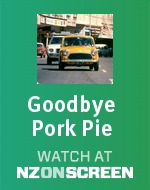Population
Population growth had slowed in the mid-1970s, and this trend continued in the 1980s. Over the decade the total population increased by a little over 250,000, to 3.4 million. The vast majority - 2.5 million – lived in the North Island, with nearly a quarter in Auckland. Just over 81% of the population identified themselves as ‘European’, 12% as Māori and nearly 4% as Pacific Island.
The gap between Māori and non-Māori in terms of life expectancy continued to narrow, but a newborn non-Māori boy in the mid-1980s could expect to live four years longer than his Māori counterpart, and a non-Māori female five years longer than a newborn Māori girl.
Immigration from the British Isles continued to decrease and the tidal movements to and from Australia were the largest flows of migrants. By the end of the decade there was a net annual outflow of more than 30,000 with nearly 60% of all Kiwis moving overseas, included many young Māori, heading for Australia.
Better access to contraception and changing social attitudes saw the average family shrink from around four children in 1961 to just under two 20 years later.
‘Rogernomics’
In 1965 New Zealand was the world’s sixth most wealthy country per capita, but by 1980 it had slipped to 19th. The twin evils of rising inflation and unemployment had hit the New Zealand economy hard. In June 1982 Prime Minister and Minister of Finance Robert Muldoon announced a wage and price freeze to combat both. Critics argued that this would simply suppress rising prices and not address the New Zealand economy’s core problems.
Following National’s defeat in the snap election of June 1984, Labour embarked upon a programme of free-market reforms which became known as ‘Rogernomics’ (a not necessarily affectionate reference to Minister of Finance Roger Douglas). The heavily regulated economy of the Muldoon era was swept away. Many government departments were corporatised and restructured into commercially oriented organisations, some of which were then sold to private investors. A public service position was no longer a ‘job for life’. The financial market was deregulated and controls on foreign exchange were removed. The removal of tariff protection exposed local producers to greater competition from imports which resulted in the loss of thousands of manufacturing jobs. The abolition of subsidies hit farmers hard, with some losing their farms as a result.
A goods and service tax (GST) was introduced in 1986. Critics labelled it a ‘consumption tax’ which would have the greatest impact on the poor, while New Zealand’s highest earners benefited from a cut in the marginal income tax rate from 66% to 40.5% by 1989. The elderly were now required to pay surtax on their government pension.
Gliding on
The popular television series Gliding on (1981-85) portrayed the public sector as a refuge for ‘pen-pushers’. It was described as New Zealand’s ‘first locally-made sitcom to become a bona-fide classic’, but those who failed to appreciate the satirical intent saw it as confirmation that the public sector was in need of reform.
Many New Zealand investors prospered following the deregulation of the financial markets in 1984. ‘Yuppies’ and corporate high-flyers thrived in this environment alongside many ‘Mum and Dad investors’. Speculation on the stock exchange seemed to replace productive sectors which had built and sustained the country over generations. When the Wall Street market in New York dropped sharply in October 1987, New Zealand was quickly caught up in the fallout. Many individuals and businesses went bust. To those who had already suffered in the name of economic reform, this seemed like a case of ‘reaping what you sow’.
Māori were hit hard particularly hard by Rogernomics as they were disproportionately employed in a number of previously government-managed industries (as well as other industries like freezing works) which were restructured with major job losses. Māori unemployment soared to 25% by 1992, when the overall rate was 10%.
Labour was comfortably re-elected just before the 1987 stock-market crash, but David Lange and Roger Douglas were increasingly at odds over the nature and pace of reform. Lange’s call for a pause and ‘a cuppa’ was resisted by Douglas. When Lange backtracked on Douglas’s call for a flat rate of income tax, the gloves were off. Douglas and his chief ally Richard Prebble eventually lost their positions in Cabinet but were voted back by caucus in August 1989, a development which prompted Lange’s resignation as prime minister. His successor, Geoffrey Palmer, also quit months out from the 1990 election, leaving Mike Moore with a seemingly impossible task as Labour’s popularity continued to fall. In the end Labour suffered its worst defeat since 1931.
Popular culture
On the box
British and American TV shows continued to dominate the small screen, although some local shows enjoyed a strong following. Perennial favourites Country calendar and A dog’s show helped keep Kiwis in touch with their rural roots and enjoyed prime-time slots. In 1983 pioneering soap opera Close to home’s groundbreaking eight-year run came to an end, as did the immensely popular local all-star wrestling show, On the mat. In 1981 Kiwi kids got their first taste of What now?, which their own children are still watching in 2013.
New directions in local television included the first forays into home-grown police drama, with Mortimer’s patch (1980) followed by Shark in the park (1989). No local show captured the essence and fashion of the ’80s better than the cult ‘glitter-soap’, Gloss. When it went to air on the eve of the stock-market crash, New Zealanders were introduced to the Redferns and a fictional publishing empire awash with ‘champagne, shoulder pads and mega-bitchiness’.
Te karere, a Māori-language news programme, debuted in 1982. The biggest shake-up in local news and current affairs came in 1989 with the first Holmes show. Hosted by top-rating radio talkback host Paul Holmes, Holmes aimed to provide ‘in-depth analysis of the news of the day’ following the 6 p.m. news bulletin. The first episode saw Holmes goad controversial America’s Cup skipper Dennis Conner into walking out during a live interview. This set the scene for the personality-driven style that was to dominate the slot for the next 15 years.
New Zealand’s first privately owned television network, TV3, went to air in 1989.
A golden era for local music
The 1980s was the decade of the music video. Radio with pictures had established itself as essential TV viewing for Kiwi fans of rock music. For the first half of the decade its host was Karyn Hay, whose ‘unreconstructed Kiwi vowels’ heralded for some ‘the end of civilization as we knew it’. Others embraced her as a ‘breath of indigenous fresh air’.
The 1980s ushered in a second golden era for local music. In a 2001 poll to find the greatest New Zealand songs of all time, seven of the top 10 were released in the 1980s. The likes of Split Enz and Crowded House put New Zealand music firmly on the international map by succeeding in the highly lucrative British and United States markets. The Flying Nun record label promoted a distinctive local sound.
New Zealand musicians were willing to sing about ‘things that mattered’, be they rising unemployment, dislike of the Muldoon government, the Springbok tour or the growing anti-nuclear movement. Seminal Auckland band Blam Blam Blam had a hit in 1981 with what for some became an unofficial national anthem, ‘There is no depression in New Zealand’. The pioneers of ‘Pacific reggae’, Herbs, captured the mood of the nation with their 1982 hit, ‘French letter’, which protested against French nuclear testing in the South Pacific.
New Zealand on the big screen
Tax incentives saw an unprecedented number of films made here during the decade. A few established themselves as Kiwi classics, including 1981’s Goodbye pork pie and the country’s first animated full-length feature, Footrot Flats: the dog’s tale (1986). Utu (1983), Vigil (1984) and The navigator: a medieval odyssey (1988) all screened at the influential Cannes Film Festival, with Vigil being nominated for the prestigious Palme d’Or, the festival’s supreme award.
New Zealanders in print
In 1985 Keri Hulme won the (Man) Booker Prize for her first novel, The bone people. Janet Frame continued to make her mark on the local literary scene with The Carpathians and a three-volume autobiography. In 1987 Patricia Grace, prominent in the emergence of Māori fiction in English, won the New Zealand Book Award for Fiction for Potiki, which was soon translated into several other languages. 1983 saw the debut of Lynley Dodd’s much-loved terrier, Hairy Maclary from Donaldson’s Dairy, who quickly became a firm favourite with Kiwi children (and their parents).
Protest and issues
The 1981 Springbok rugby tour here divided the nation, while the rebel Cavaliers’ tour five years later further tarnished the reputation of the national game. The violence that accompanied the ’81 tour was such that some argued New Zealand had ‘lost its innocence’.
Losing our religion
Answering a census question in 1956, fewer than 1% of New Zealanders had claimed to have no religious belief. Thirty years later, nearly 18% of New Zealanders either stated that they had no religious belief or did not specify one.
The anti-nuclear movement was somewhat less divisive. The Labour government elected in 1984 pursued policies that would establish New Zealand as a nuclear-free country, including banning visits by ships that were nuclear-powered or potentially nuclear-armed. In February 1985 the government refused entry to the warship USS Buchanan. A few months later the anti-nuclear issue took a more sinister turn when French Secret Service (DGSE) agents blew up the Greenpeace flagship Rainbow Warrior while it was moored in Auckland. In 1987 the passage of nuclear-free legislation saw the United States formally suspend its security guarantee to New Zealand, effectively isolating the country from the ANZUS alliance.
Waitangi Day remained a focus for a number of issues relating to race relations. Māori opinion was divided both on Treaty issues and on Waitangi Day events. Activists called for a boycott of Waitangi Day until the terms of the Treaty were honoured. The sight of police in riot gear at the 1983 ceremony at Waitangi saw many Pākehā question the value of such commemorations. Labour attempted to take some of the heat out of Waitangi Day by opting for a low-key official ceremony at the Beehive with only a brief morning commemoration on the Treaty House grounds. In 1988 it announced that there would be no official commemoration. In 1985 the Waitangi Tribunal was empowered to investigate Treaty claims dating back to 1840, a development which opened significant new avenues for redress to Māori.
In 1984 a national telephone tolls operator sparked controversy when she began greeting callers with ‘Kia ora’. When her supervisor instructed her to use only formal English greetings, there was a nationwide debate. In the end ‘Kia ora’ became an acceptable greeting for toll operators, but the incident highlighted the place of te reo Māori (the Māori language) in New Zealand. In 1985 this became the subject of a Waitangi Tribunal claim which eventually led to the Maori Language Act 1987, which made Māori New Zealand’s second official language.
Sport
During 1981 and 1982 the New Zealand football team embarked upon a marathon qualifying campaign for the 1982 World Cup finals in Spain. A number of the key matches took place against the violent backdrop of the Springbok rugby tour. The All Whites won a sudden-death play-off in Singapore against China to qualify. In Spain they lost their pool matches against Scotland, the Soviet Union and Brazil, but were far from disgraced. Many felt that they had won their own world cup just by getting there.
The government applied considerable pressure on New Zealand athletes to support a boycott of the 1980 Moscow Olympic Games in response to the 1979 Soviet invasion of Afghanistan. Eventually only four New Zealand athletes attended. The Soviet bloc responded in kind four years later in Los Angeles. Despite the politics, the Los Angeles Olympics are remembered by many Kiwis as our most successful ever, with eight gold medals in a total tally of 11. New Zealand finished eighth on the medal table, ahead of the likes of Australia, Great Britain and France.
The ’80s were a golden era for New Zealand cricket. A controversial 1-0 home series victory over the West Indies in 1980 was the only test series defeat for the ‘Calypso Kings’ during the decade. The infamous underarm incident against Australia at the Melbourne Cricket Ground in 1981 was a definite low-point, but New Zealand exacted revenge in 1985 with victory in a test series for the first time on Australian soil. New Zealand also defeated England in a test match in England for the first time in 1983 before following up with a breakthrough series victory in England three years later.
Kiwi’s withering finish in the 1983 Melbourne Cup was one of the most remarkable victories ever in the ‘great race’. Five years later Empire Rose became another popular New Zealand winner, and the first mare to win the Cup since 1965.
Winning the inaugural world cup for rugby which we co-hosted in 1987 did much to rehabilitate the game in this country. The New Zealand netball team completed the double for New Zealand’s most popular winter sports for men and women by winning the world title in Glasgow later that year
Consumption
Thanks to inflation the average weekly wage nearly doubled between 1984 and 1989, from $285 to $529. By decades end a typical Kiwi household spent around $120 per week on housing and $92 on food.
We loved our dairy products, consuming on average 150 litres of fresh milk and cream per year, along with five large blocks of cheese and 16 kg of butter. ‘Meat and three veg’ remained standard fare in most homes. Per capita we devoured around 100 kg of meat per annum, the bulk of it beef (46 kg), mutton and lamb (30 kg). In addition we bought around 6 kg of frozen or fresh fish each per annum (the deep-fried variety from the local ‘chippie’ also remained a firm favourite). We each got through around four 10-kg sacks of potatoes and 19 kg of canned or frozen vegetables. Apples, bananas and oranges were the most popular fruit.
Increased migration from Asia opened up a new range of cuisine. Kiwis accustomed to the occasional Chinese meal could now try Japanese, Malaysian, Thai or Vietnamese food.
Coffee and tea were consumed in equal quantities (around 2 kg each). Kiwis back from their extended ‘OE’ (Overseas Experience) had enjoyed a more cosmopolitan lifestyle overseas and patronised an emerging café culture. Coffee was becoming available in an increasing range of styles.
Between the early 1970s and late 1980s annual beer consumption halved from around 178 litres per adult to around 90 litres. Wine consumption – synonymous with growing affluence – doubled from 13 bottles to 29 in the same period. More women were now drinking alcohol, with wine their preferred tipple. The local wine industry boomed – the area planted in grapes soared from 2351 ha in 1975 to 5901ha in 1982.
Smoking was becoming less socially acceptable. The average person aged 15 and above puffed their way through 2856 cigarettes in 1980, but only 1956 by the end of the decade.
Road toll
More than 7000 people lost their lives on New Zealand roads in the 1980s. The decade saw five of the 10 worst years on our roads; 1987 was the second-worst in our history with 795 fatalities.
New technology
The microwave oven made its first appearance in the Consumer Price Index basket of goods and services in 1988. At around $790 (nearly $1500 in today’s terms) this was a luxury item owned by less than 50% of households. About the same proportion had a VCR (videocassette-recorder). Only 11.5% had a home computer at the end of the decade. The first generation of mobile phones were by today’s standards anything but mobile. Some questioned their value and they remained firmly in the luxury category.
The 1980s also saw the steady decline of vinyl, as music lovers embraced first the cassette tape and the portability of devices such as the ‘Walkman’, and then the compact disc.
‘Girls can do anything’
By 1981 one-third of married women were in full-time employment, nearly twice the proportion in 1961. Women continued to dominate professions such as nursing and primary teaching, but by 1981 they also accounted for a fifth of all lawyers and doctors, compared to 3% a generation earlier.
Though separate pay scales for men and women had been abolished in 1972, by 1985 women still earned 22% less per hour than men. In 1980 the New Zealand Federation of Labour adopted the Working Women’s Charter, sometimes called a ‘bill of rights’ for working women. By the mid-1980s the government’s Employment and Vocational Guidance Service was actively promoting the catch-cry, ‘Girls can do anything’.
The marriage rate fell as attitudes to de facto relationships changed. The introduction of ‘no-fault divorce’ in the Family Proceedings Act 1980 was a major reason the annual divorce rate tripled from five per 1000 marriages in 1970 to 15 in the early 1980s.
In 1974 there was one women’s refuge in New Zealand. A decade later, 20,000 women and children sought help from one of 34 such refuges. This may have indicated greater awareness of domestic violence and greater willingness to act, as much as an increase in violence per se.

















Community contributions